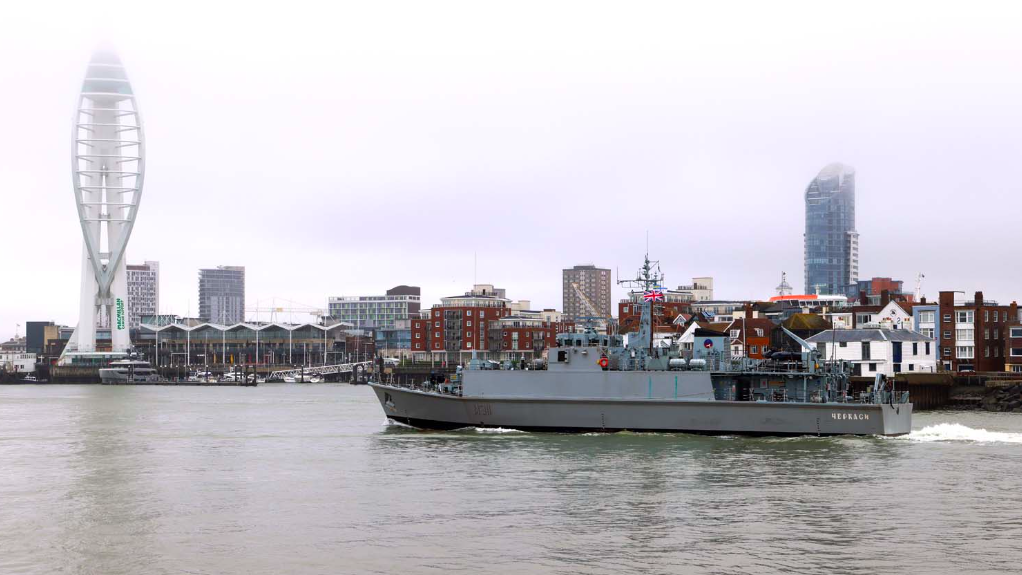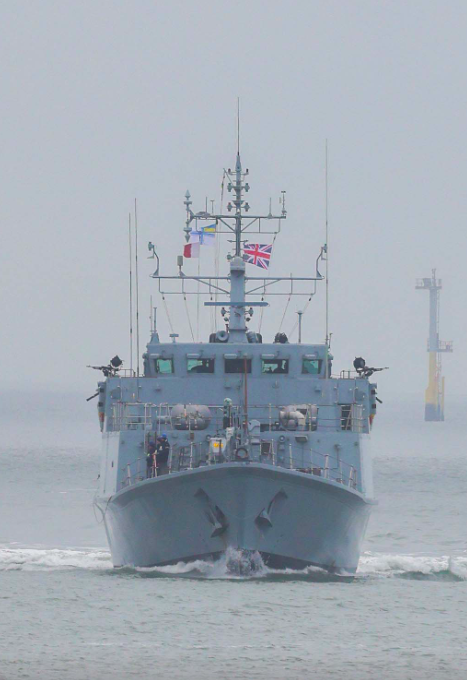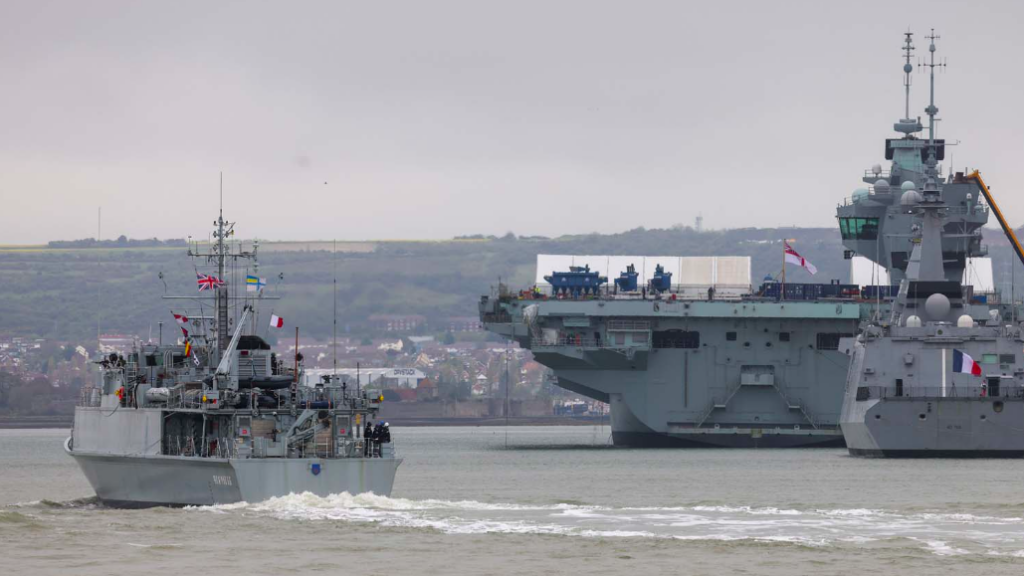Ukrainian Navy to operate two ships from Portsmouth

Two former Royal Navy ships now serving with the Ukrainian Navy will be a frequent sight in the waters off the South Coast as they operate from their new temporary home in Portsmouth naval base.
The Sandown-class minehunters, formerly HMS Shoreham and HMS Grimsby, now renamed Cherkasy and Chernihiv after being transferred to Ukraine last year, arrived in Portsmouth following a two-day voyage from Scotland.
The ships will be based in Portsmouth for the foreseeable future as they prepare for exercises with the Royal Navy alongside the US Navy in UK waters, which will help Ukraine understand how to operate with NATO navies.
The Ukrainian sailors have undergone training with the Royal Navy’s instructors from Fleet Operational Standards and Training over the past 18 months, meaning they are able to safely operate their new vessels.
Their arrival is a key milestone in the Maritime Capability Coalition, which helps Ukraine’s navy with training, equipment, and infrastructure, to bolster security in the Black Sea region. The UK is co-leading the Maritime Capability Coalition, alongside Norway.

Eventually, the plan is for Cherkasy (pictured above and left) and Chernihiv – which both arrived in Portsmouth flying the Union Jack as a courtesy – to operate in the Black Sea after Russia’s illegal and unprovoked war in Ukraine ends, clearing mines from vital sea lanes.
“We haven’t been telling too many people the ships are coming, but now they’re here they will be welcomed with open arms both here in the Naval Base and in the city of Portsmouth,” says naval base commander, Commodore John Voyce.
“I’ve just been on board and the sailors are excited and positive about being here in Portsmouth naval base, getting support from UK companies and training with the Norwegian and Royal Navy.
“The ships will be based here for as long as they need, and we will be here to support them. The training of their people is important, and they can get out on the sea and work on maritime skills.”
“There are huge amounts of Russian mines across 800 square kilometres of the Black Sea and Ukraine’s economy is heavily based on exporting grain through the same sea.”
Commodore Paul Pitcher, the Royal Navy’s Commander Surface Flotilla.
“Key to the post-conflict stability of Ukraine and economic recovery is the safe passage of traffic. These vessels will be crucial in providing safe sea lanes for the Ukrainian economy,” says Pitcher.
Cherkasy and Chernihiv (pictured below left) are currently not able to head home to Ukraine as they cannot enter the Black Sea due to the terms of the Montreux Convention, which restricts passage of military vessels through the Bosporus Strait at times of war.

The ships, however, will form a critical capability for Ukraine in the future defence of its coastline as the UK looks to support the longer-term capabilities of the Ukrainian Navy, while they look to protect commercial shipping by detecting and disabling sea mines.
Ukraine has sunk or disabled around a third of Russia’s Black Sea Fleet since the start of the conflict through a series of precision-guided missile strikes and innovative use of maritime one-way attack drones. The Royal Navy says that with support from the UK, Ukraine’s Black Sea activity has meant, despite ongoing Russian strikes against Odesa oblast, Ukraine has almost certainly exported more grain through its seaports in the first months of 2024 than at any time since the outbreak of the war.
Earlier this month, a Royal Navy-led ‘999 emergency centre’ revealed it has dealt with an ‘unprecedented’ rise in distress calls due to the Red Sea crisis. The team at the UK Maritime Trade Organisation (UKMTO) are dealing with two or three reports of attacks and incidents daily – compared with monthly – as a result of the wave of attacks on shipping in the southern Red Sea and Gulf of Aden since November.










